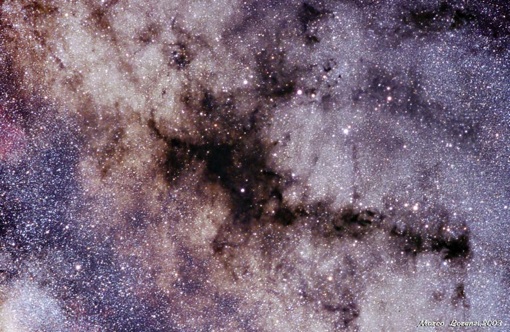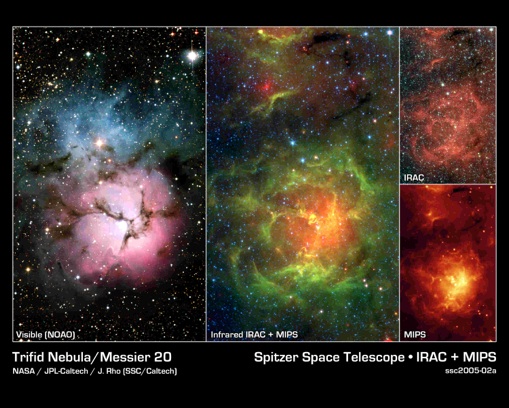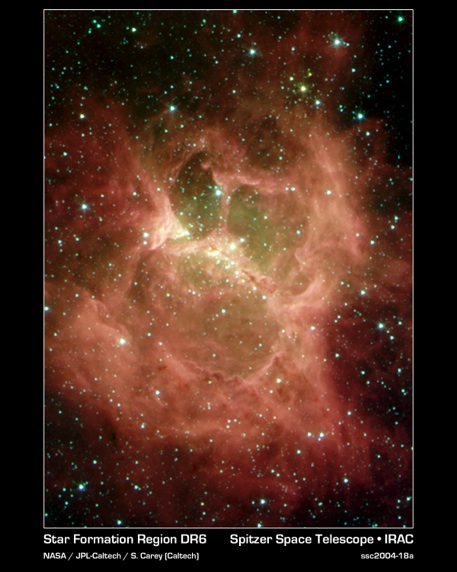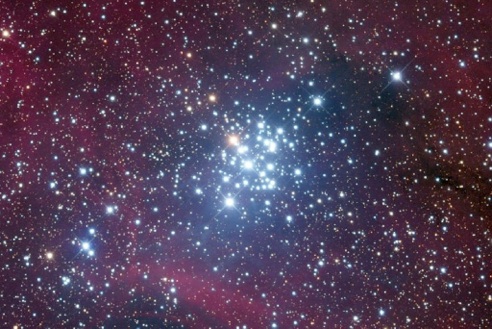Stars form in vast admixtures of gas and dust called giant molecular clouds (GMCs). GMCs come in a wide range of sizes, from a few pc to hundreds of pc across (1 pc=1 parsec=3.26 light-years), and an even wider range of masses, from thousands to tens of millions of solar masses.
The clouds are turbulent. The gas and dust within them move around at highly supersonic velocities, sometimes of tens of kilometres per second. The turbulence gives the clouds very complex structure, as shown in the image of the Pipe Nebula to the right.
Stars form when dense globules of gas - cores - lose their battle with gravity and collapse. The cores themselves are formed by converging turbulent flows.
There is enough gas in the clouds to form tens to millions to stars, so that stars form in clusters with tens to millions of members. To begin with, the clusters are deeply enshrouded in gas and dust and are invisible to optical telescopes. They can be seen at infrared wavelengths, however. This can be seen in the images of the Trifid Nebula to the right, shown at several different wavelengths.

The Pipe Nebula (astrosurf.com)
The Jewel Box Cluster (anneastronomynews.com)
GMCs only convert a few percent of their gas to stars before they are destroyed, apparently by feedback from their own stars.
To the left, an infrared image of the DR6 nebula is shown. The image depicts the damage done to a molecular cloud by the radiation and winds from the cloud’s own stars.
Towards the centre of the image, a dense cluster of stars is visible at the intersection of three gaseous filaments.
Radiating out from the cluster are three evacuated bubbles, cleared out by the radiation and winds from the stars in the central cluster.
Around the bubbles is a shell of gas - the swept-up remains of the molecular cloud.
The destruction of a star-forming GMC eventually leaves an open cluster or association, like the Jewel Box Cluster, shown below.

Molecular Clouds



Exactly how stellar feedback destroys molecular clouds at such an early stage in their evolution, when they have only converted a very small fraction - typically only a few percent - of their gas reserves to stars is not well understood.
This is the main focus of my research.
